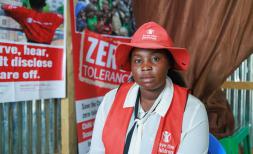Five things you didn’t know about Rohingya children in Asia
In 2017, the world watched in horror as hundreds of thousands of Rohingya people fled from Myanmar into Bangladesh to escape violence. But this was actually just the latest chapter in a long story of abuse - Rohingya have left Myanmar for decades to escape discrimination and persecution.
Across Asia, several countries host Rohingya communities – some large, some small; some have been there for generations, while others have only just arrived. What they all have in common is that they live lives on the margins, at constant risk of arrest, abuse or exploitation.
Today, Save the Children is releasing a new report highlighting the plight of Rohingya children in five countries: Myanmar, Bangladesh, Malaysia, Thailand and Indonesia.
Here are five things this report will tell you about Rohingya children:
There are close to 700,000 Rohingya children in Asia, but the majority now live outside of their home country, Myanmar.
Bangladesh hosts the largest group of Rohingya children (451,000), most of whom fled violence in Rakhine State in 2017. In Myanmar, there are an estimated 243,000 Rohingya children living in communities and camps in Rakhine State. Malaysia is home to some 100,000 Rohingya refugees, an estimated quarter of whom are children. Thailand (3,000-15,000) and Indonesia (several hundred) host the smallest Rohingya populations of the five countries we looked at, with no exact numbers on how many children live there.

A whole generation of Rohingya children is essentially growing up without access to quality education.
In Myanmar, segregation and widespread restrictions on freedom of movement contribute to blocking boys and girls from all levels of schooling. Those who have fled the country face different challenges. In Bangladesh and Malaysia, Rohingya refugees are officially prohibited from accessing formal education, meaning they rely on NGOs, UN agencies or community schools to provide informal teaching. Thailand and Indonesia have more progressive policies that include children on the move in national education systems, but implementation can be patchy and Rohingya boys and girls continue to fall through the net.
This is all the more tragic since Rohingya communities overwhelmingly tell us that education for their children is one of the things they value the most. One 15-year-old boy who fled from Myanmar to Cox's Bazar in 2017 spoke about his desire to learn: "We want a peaceful future. Once I am educated, I will fight for peace. If we get education, I think our future will be bright."

While the root causes of the crisis lie in Myanmar, Rohingya refugee children face many of the same challenges when they arrive in other countries.
They live without citizenship or legal status, and struggle to access healthcare and education. Many Rohingya boys and girls are even afraid to leave their homes in case they are detained and deported as “illegal immigrants”. In Malaysia, for example, one 16-year-old boy told us: “I can’t go along with [with my friends] even if they call me to play because I don’t have documents here. I am afraid of police and of being arrested.”

Some Rohingya are so desperate that they risk their lives on dangerous sea journeys to build a better life for themselves elsewhere.
These journeys are made on rickety and overcrowded boats where Rohingya are at risk of abuse by traffickers and struggle to get enough food and water. One 11-year-old girl, whose boat arrived in Aceh, Indonesia in September 2020, told us about her harrowing journey: “I was so tired when I arrived, I could hardly think. We were at sea for months. The boat was so small. There was barely any food and when I wanted to drink there was not enough water. My body itched because I couldn’t take a shower.”

These sea journeys were much more common before 2015, when a regional crackdown on trafficking networks triggered the so-called “Asian boat crisis”. Worryingly, however, maritime migration picked up pace again last year, when at least 2,400 Rohingya people took to boats. UNHCR, the UN Refugee Agency, estimated that at least 200 people died at sea in 2020, while more than one-third (36%) of the survivors were children. Such journeys have continued in 2021: as recently as early June, one boat with more than 80 refugees was rescued by fisher folk in Indonesia, having been adrift on the ocean for several months.
The world can – and must – do more to help Rohingya children. We are calling on governments everywhere – in Asia and beyond – to push Myanmar to end the root causes of the abuse against Rohingya. One key place to start is to support international justice processes – those who committed atrocities against Rohingya boys, girls and their families must be held to account.







